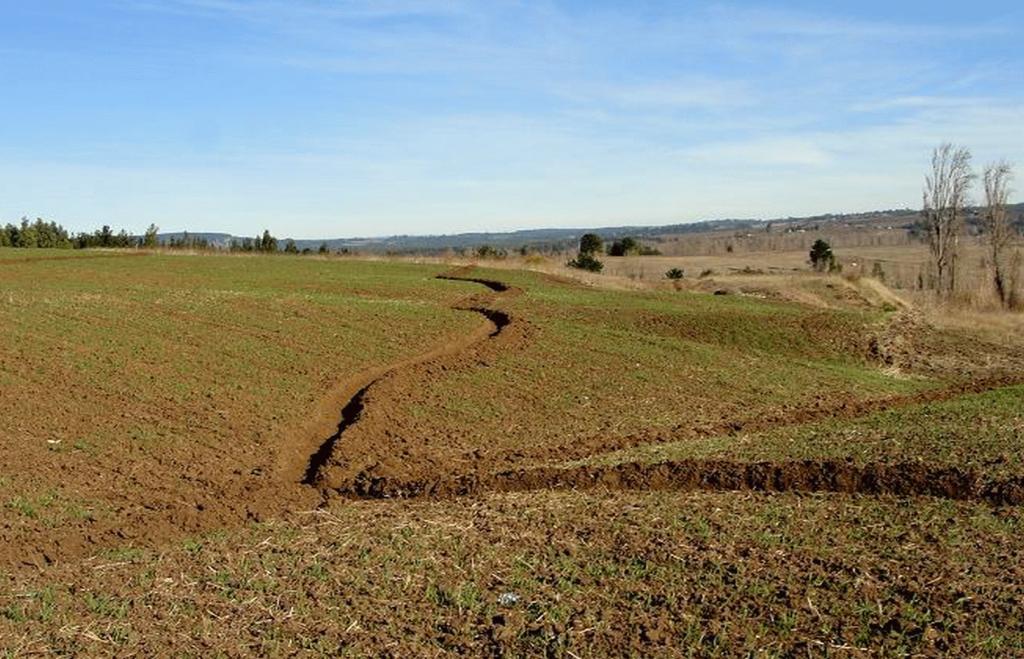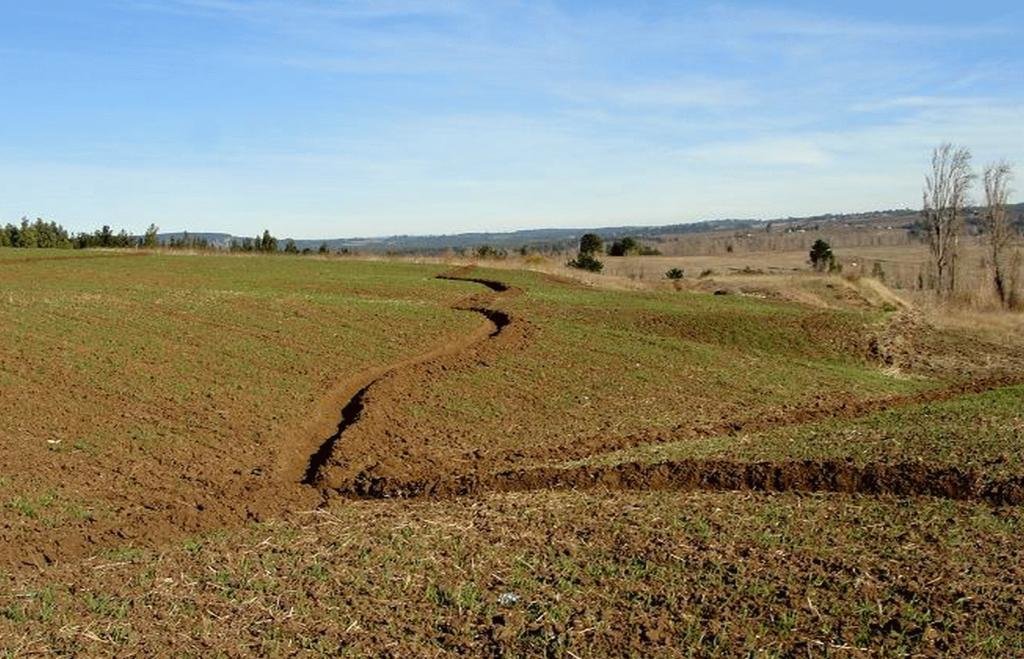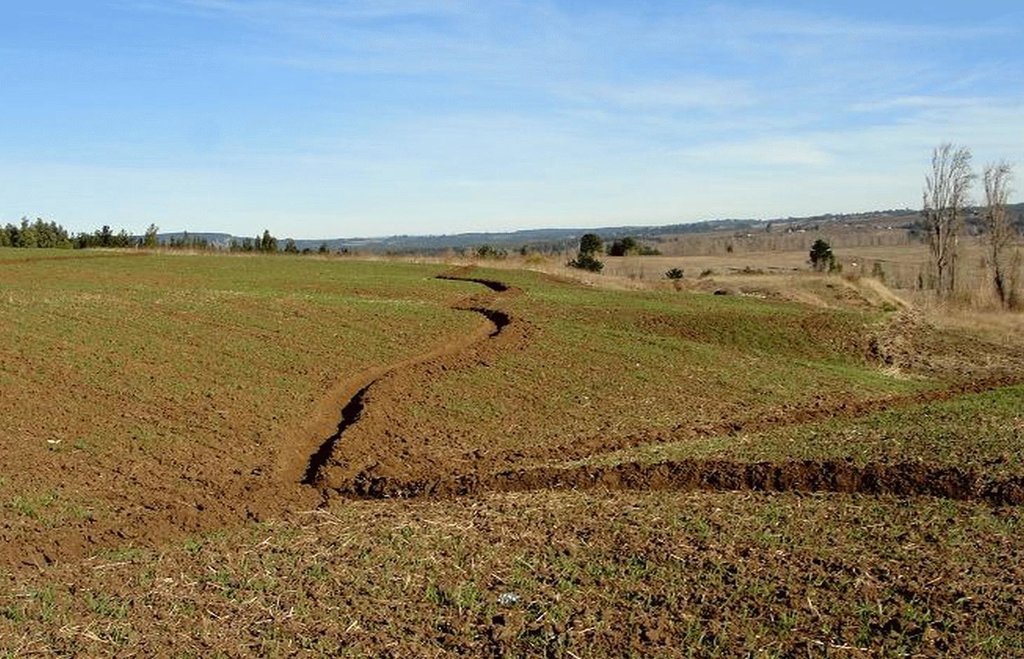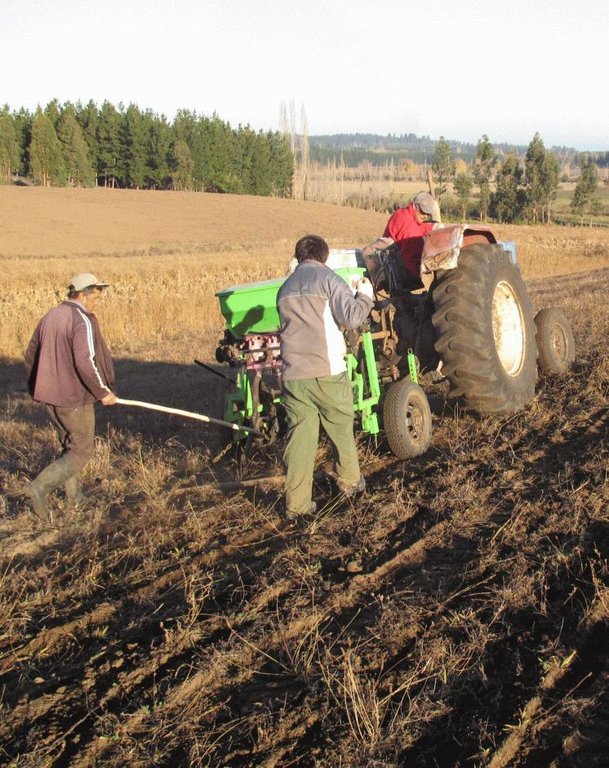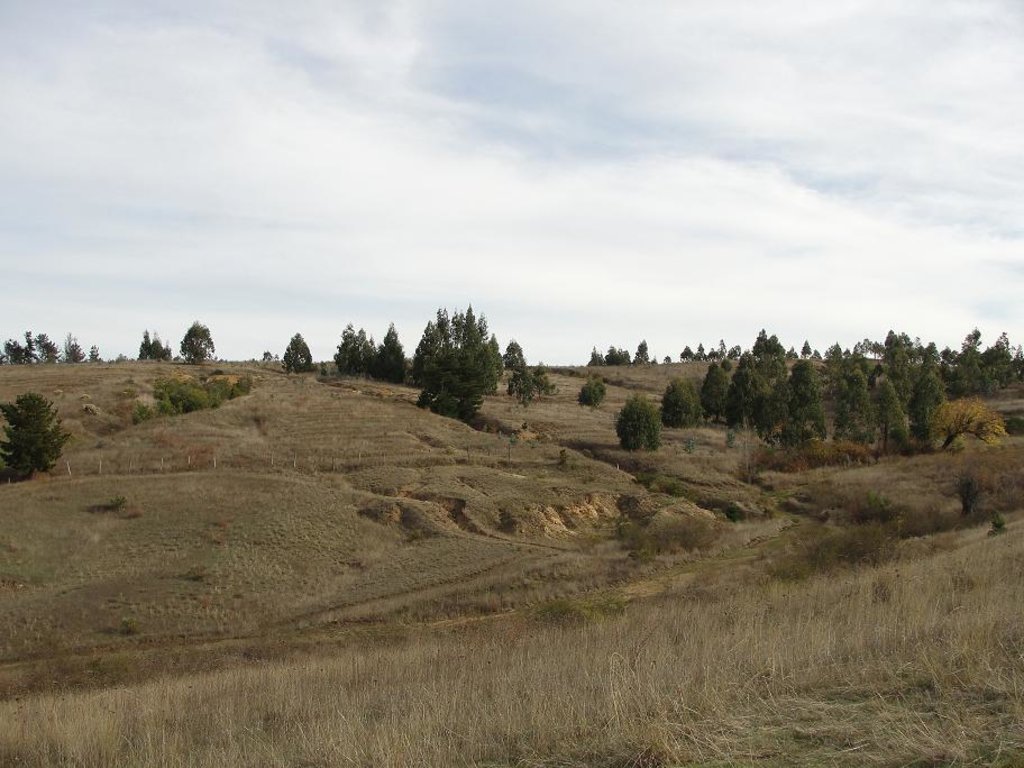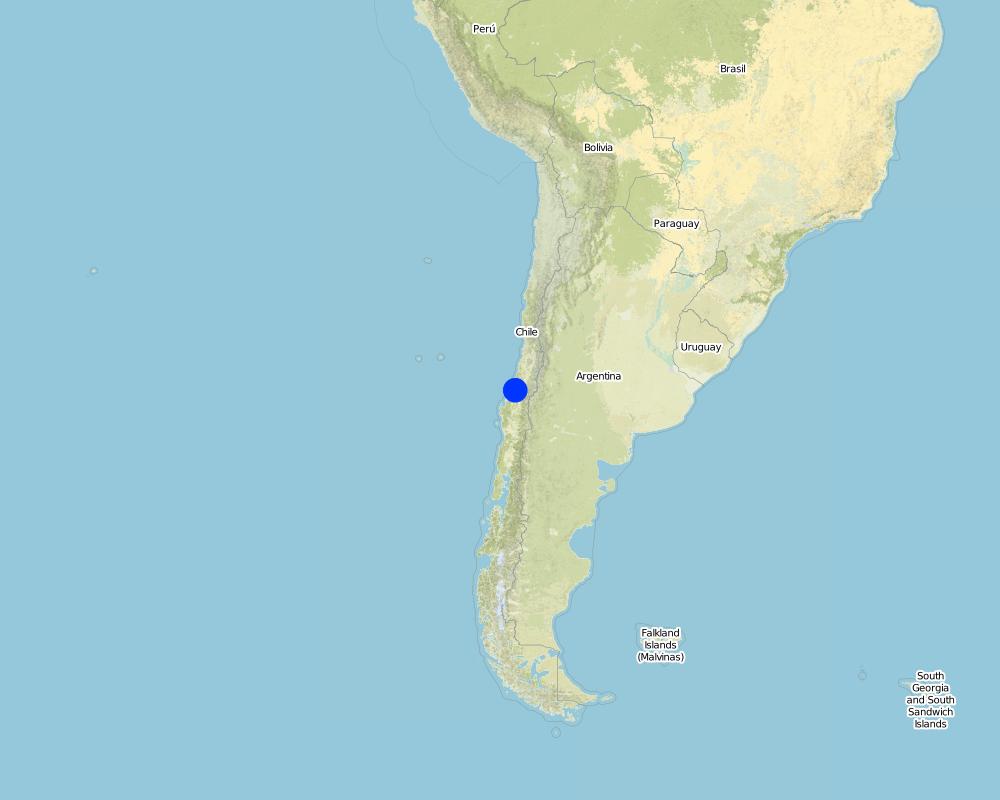Dissemination of soil conservation technologies in dryland areas [智利]
- 创建:
- 更新:
- 编制者: Carlos Ovalle
- 编辑者: –
- 审查者: Fabian Ottiger
Cero labranza con subsolado (Spanish)
approaches_2577 - 智利
查看章节
全部展开 全部收起1. 一般信息
1.2 参与方法评估和文件编制的资源人员和机构的联系方式
有助于对方法进行记录/评估的机构名称(如相关)
Instituto de Investigaciones Agropecuarias (INIA) (Instituto de Investigaciones Agropecuarias (INIA)) - 智利1.3 关于使用通过WOCAT记录的数据的条件
(现场)数据是什么时候汇编的?:
11/05/2011
编制者和关键资源人员接受有关使用通过WOCAT记录数据的条件。:
是
1.4 SLM技术问卷的参考
2. SLM方法的描述
2.1 该方法的简要说明
Dissemination of no tillage with subsoiling in the Municipality of Yumbel
2.2 该方法的详细说明
该方法的详细说明:
Aims / objectives: The Commune of Yumbel is a rural territory in the secano interior of central-south Chile, which has historically been an area of cereal crops and pulses. This has represented for many years the mainstay of the economy of small and medium farmers in the area. Owing to the sharp deterioration in the quality of the soil, caused by years of cultivation without respect for conservation, production potential was quickly fading and plunging farmers into an economic and social crisis caused by low yields and low income from agriculture. However, despite degradation, the commune still has abundant natural resources of soil and water, which will not be used by the forestry industry, and which can be recovered for productive and profitable agriculture. In May 2009, the team of researchers from INIA Quilamapu started this initiative based on promising results obtained in the EU DESIRE project for zero tillage, subsoiling and new crop rotations. The initiative was oriented towards transferring the technologies developed in DESIRE. The project received financial support from the Municipality of Yumbel.
The aim was to revitalise agriculture in the district of Yumbel, improve traditional crops using a conservation approach, which enables small- and medium-scale farmers to improve their incomes, create jobs and improve their quality of life.
Specific objectives:
• To develop new farming systems based on the application of soil conservation practices (no tillage and subsoiling) that prevent erosion, and allow the development of a more sustainable and economic agriculture.
• To improve crop rotations, introduce grain and pasture legumes to diversify production and use of nitrogen inputs for lower nitrogen fertilizer costs.
• To build-up again the production of grain legumes and cereals in the district of Yumbel
• To renew the genetic material of crop species and varieties currently available to farmers in the area, allowing access to improved varieties of higher yield potential and resistance to diseases.
Methods: We used a participatory approach, incorporating small producers in the extension programme from the beginning. Three representative areas were selected. Leader farmers were chosen in each sector who were responsible for field work. No tillage machinery was provided by INIA and acquired by a local farmer. The project directly involved 50 farmers and 250 ha of land. Further 400 farmers are being benefited by training on technologies of soil conservation and crop rotations and management.
Role of stakeholders: Municiplity of Yumbel: financing the project of technology transfer INIA and DESIRE project: human and material resources (machinery, transportation researchers, etc.). Ministry of Agriculture (INDAP, Institute of Agricultural Development): financing of management plans for soil conservation.
Technology transfer companies: technical assistance directly to the small farmers
Farmers: conducting field work and incorporating new technologies.
2.3 该方法的照片
2.5 采用该方法的国家/地区/地点
国家:
智利
区域/州/省:
Bíobio and Maule region
有关地点的进一步说明:
Cauquenes, Chile
Map
×2.6 该方法的开始和终止日期
注明开始年份:
2007
终止年份(若不再采用该方法):
2011
2.7 方法的类型
- 基于项目/方案
2.8 该方法的主要目的/目标
The Approach focused on SLM only
To revitalising agriculture in the district of Yumbel, improve traditional crops with a conservation approach, which enables small- and medium-scale farmers to improve their incomes, to create jobs and to improve their quality of life.
The SLM Approach addressed the following problems: 1. Lack of machinery in the area 2. Few service providers 3. Lack of technical knowledge 4. Lack of cash to invest in SLM
5. Failure to implement a subsidy programme for farmers so that they can be organized around the creation of small company of service providers of machinery for subsoiling and no-tillage sowing.
2.9 推动或妨碍实施本办法所适用的技术的条件
社会/文化/宗教规范和价值观
- 阻碍
The traditional farming system. Farmers have used the mouldboard plough as the primary tillage implement.
Treatment through the SLM Approach: Showing in farm days, the excellent results obtained in the experimental sites with no tillage and new crop rotation.
财务资源和服务的可用性/可得性
- 阻碍
Lack of capital and financial resources of the farmers.
Treatment through the SLM Approach: State instruments and aids to implement soil conservation plans in the fields of the producers.
机构设置
- 阻碍
Absence or lack of coordination between institutions responsible for rural development.
Treatment through the SLM Approach: Implementation of a participatory rural development project for soil conservation and improvement of agriculture, inspired by the methodologies and experience of the project.
了解SLM,获得技术支持
- 阻碍
Lack of knowledge on sustainable farming practices.
Treatment through the SLM Approach: Implementation of a soil conservation programme under the real conditions of the farmers with an environmental and economic sustainability approach.
3. 相关利益相关者的参与和角色
3.1 该方法涉及的利益相关者及其职责
- 当地土地使用者/当地社区
Men are more involved in tillage activities. Men perform hard labour job in the land, while women participate in household tasks.
- SLM专家/农业顾问
INIA
- 教师/学龄儿童/学生
Universidad de Concepción, Universidad de Talca
- 国家政府(规划者、决策者)
INIA, SAG
- 国际组织
3.2 当地土地使用者/当地社区参与该方法的不同阶段
| 当地土地使用者/当地社区的参与 | 指定参与人员并描述活动 | |
|---|---|---|
| 启动/动机 | 自我动员 | The producers themselves and the municipality of Yumbel demanded the project implementation given the severe problems of rural poverty and the soil degradation |
| 计划 | 互动 | The technologies are being applied and implementation has been made through interaction with farmers, municipalities, INIA and INDAP |
| 实施 | 互动 | The farmers implemented the conservation practice in their lands. |
| 监测/评估 | 互动 | Researchers evaluated this results |
| Research | 互动 |
3.4 有关SLM技术选择的决策
具体说明谁有权决定选择要实施的技术:
- 主要是SLM专家,咨询土地使用者之后
解释:
Decisions on the method of implementing the SLM Technology were made by mainly by SLM specialists with consultation of land users
4. 技术支持、能力建设和知识管理
4.1 能力建设/培训
是否为土地使用者/其他利益相关者提供培训?:
是
明确受训人员:
- 土地使用者
- 现场工作人员/顾问
培训形式:
- 在职
- 农民对农民
- 示范区域
- 公开会议
- 课程
4.2 咨询服务
土地使用者有权使用咨询服务吗?:
是
说明/注释:
Advisory service is very adequate to ensure the continuation of land conservation activities
4.3 机构强化(组织发展)
是否通过这种方法建立或加强了机构?:
- 是,适度
具体说明机构的强化或建立程度:
- 本地
提供进一步细节:
The Yumbel project has had permanent participation of INIA (project DESIRE) and INDAP.
4.4 监测和评估
监测和评估是该方法的一部分吗?:
是
注释:
bio-physical aspects were monitored by project staff through measurements; indicators: Soil fertility (soil nutrient content N, P, K, S), erosion (soil loss, loss of nutrients), quality of soil (compaction, bulk density, structure, aggregate stability)
economic / production aspects were monitored by project staff through observations; indicators: Crop production (yield, quality), gross margin, profitability
There were no changes in the Approach as a result of monitoring and evaluation
There were no changes in the Technology as a result of monitoring and evaluation
4.5 研究
研究是该方法的一部分吗?
是
明确话题:
- 技术
提供进一步的细节,并指出是谁做的研究:
There are three experimental sites with evaluations to determine the best choice of conservation tillage systems and crop rotations. Different conservation tillage systems were evaluated and compared to conventional tillage. On these experimental sites, several indicators (chemical, physical and biological) were evaluated.
Research was carried out both on station and on-farm
5. 融资和外部物质支持
5.1 该方法中SLM组成部分的年度预算
如果不知道准确的年度预算,请给出一个范围:
- 10,000-100,000
注释(例如主要的资助来源/主要捐助者):
Approach costs were met by the following donors: international: 30.0%; government: 70.0%
5.2 为土地使用者提供财政/物质支援
土地使用者是否获得实施该技术的财政/物质支持?:
是
如果是,请具体说明支持的类型、条件和提供者:
INDAP (Institute of Agricultural Development)
5.3 对特定投入的补贴(包括劳动力)
如果土地使用者的劳动力是一项重要的投入,那么是不是:
- 自愿
注释:
Between INIA and Municipality of Yumbel a participative project wiht the local farmers was realized, to realize conservation tillage system.
The funding for the implementation of new technologies are 50% from the state (programme of recovery of degraded soils of the Government of Chile for soil conservation practices) and 50% of the producers themselves (materials, labour, etc.).
5.4 信用
是否根据SLM活动的方法给予信用值?:
是
对条件(利率、回报等)进行具体说明:
repayment conditions: The funding for the implementation of new technologies are 50% from the state (programme of recovery of degraded soils of the Government of Chile for soil conservation practices) and 50% of the producers themselves (materials, labour, etc.).
6. 影响分析和结论性陈述
6.1 方法的影响
该方法是否帮助土地使用者实施和维护SLM技术?:
- 否
- 是,很少
- 是,中等
- 是,支持力度很大
Mitigation of water erosion effects and better yields.
该方法是否有助于社会和经济弱势群体?:
- 否
- 是,很少
- 是,中等
- 是,支持力度很大
This programme targets small farmers of the commune, who have no access to the technology or to State aid. The results are highly promising regarding the incorporation to the development of this sector.
Did other land users / projects adopt the Approach?
- 否
- 是,很少
- 是,中等
- 是,支持力度很大
Because of the great results obtained by few farmers, the approach is being adopted by others.
Did the Approach lead to improved livelihoods / human well-being?
- 否
- 是,很少
- 是,中等
- 是,支持力度很大
Farmers that perform conservation obtained better yields, less work on the sowing and more time to attend to other activities on the land.
Did the Approach help to alleviate poverty?
- 否
- 是,很少
- 是,中等
- 是,支持力度很大
The improvement in yields and profitability of crops, the diversification of the production and the mitigation of land degradation are the strategies that are being implemented to alleviate poverty.
6.2 土地使用者实施SLM的主要动机
- 增加生产
- 增加利润(能力),提高成本效益比
- 减少工作量
- 支付/补贴
- 规章制度(罚款)/执行
- 声望、社会压力/社会凝聚
- 加入运动/项目/团体/网络
- 美学改进
6.3 方法活动的可持续性
土地使用者能否维持通过该方法实施的措施(无外部支持的情况下)?:
- 不确定
6.4 该方法的长处/优点
| 编制者或其他关键资源人员认为的长处/优势/机会 |
|---|
| Assistance programmes from the State oriented towards tackling soil degradation. (How to sustain/ enhance this strength: This project has been sustained over time and will remain at least for 3 to 4 years.) |
| High rural population in this commune, involvement of young farmers (under 40 years) |
| A strong commitment from the local authorities with the project. |
| Great interest of farmers to improve their incomes and conditions of life. |
6.5 该方法的弱点/缺点以及克服它们的方法
| 编制者或其他关键资源人员认为的弱点/缺点/风险 | 如何克服它们? |
|---|---|
| Lack of no-tillage machinery | Organization of associative farmers enterprises for the purchase of machinery and agricultural implements. |
| Insufficient training on soil conservation for the farmers or for technical assistance companies. | Training, field days, demonstrative sowings, explanatory publications, practical work with farmers and technicians. |
| Delay in allocation of resources of the instruments of the state. | Synchronizing the availability of resources with the needs of the farmers for the execution of the work (supply purchases, rental equipment, etc.) |
7. 参考和链接
7.1 方法/信息来源
- 实地考察、实地调查
- 与土地使用者的访谈
7.3 链接到网络上可用的相关信息
标题/说明:
DESIRE site information
URL:
www.desire-his.eu/en/secano-interior-chile
链接和模块
全部展开 全部收起链接
无链接
模块
无模块


